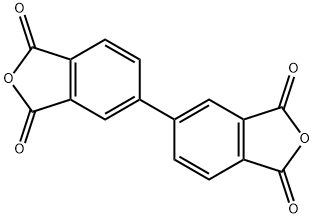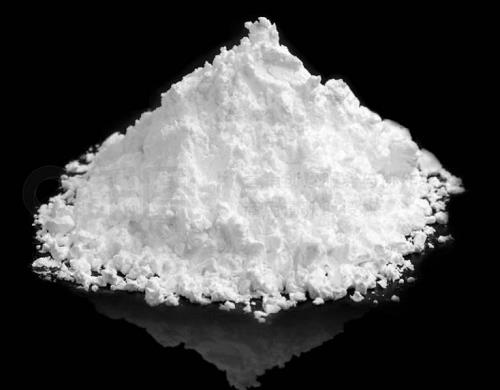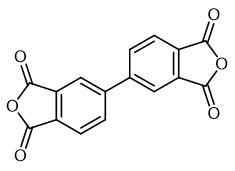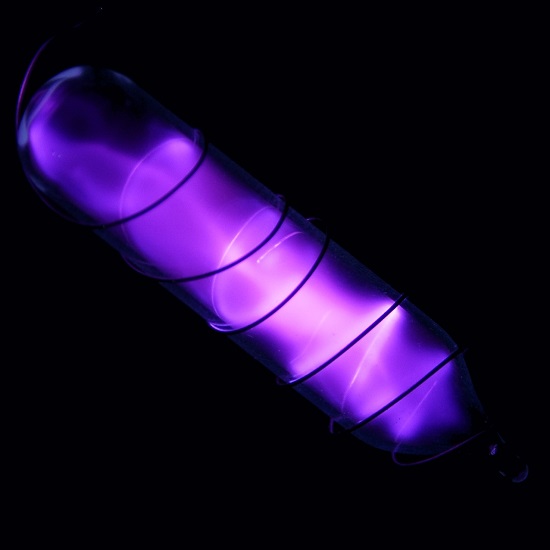What is 3,3',4,4'-Biphenyltetracarboxylic dianhydride used for?
3,3',4,4'-Biphenyltetracarboxylic dianhydride (BPDA) is a biphenyl derivative in which two phthalic anhydrides are asymmetrically linked at the 3-position and 4-position. BPDA is a raw material for the synthesis of polyimides. The backbone of polyimides synthesised from BPDA is twisted, thus inhibiting intermolecular charge transfer. As a result, polyimides are transparent and heat resistant.
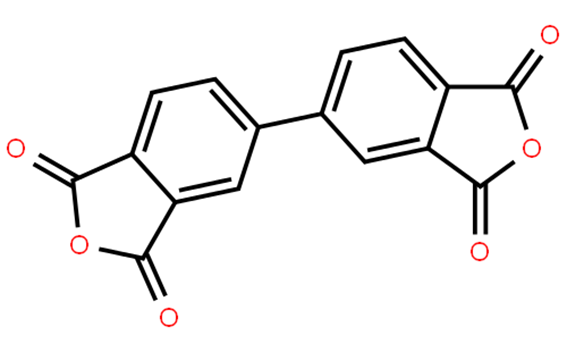
The permeability and diffusion coefficients of polyimide films based on BPDA and 4,4′-oxydianiline (ODA) to H2, CO, CO2, and CH4 are reduced, but their activation energies increase with decreasing specific volume, which reflects an average degree of aggregation of polymer molecules. The solubility coefficients also decrease with decreasing specific volume, but the enthalpy of adsorption remains almost unchanged.
BPDA and ODA are also able to prepare polyimide fibres. Residual solvent was present in the nonwoven fibres produced in a solidification bath of alcohol and water. Many tens of nanometre sized fibres and microvoids were present in the fibres. Visible fibrillation and drawn fibres were observed. Mechanical property measurements of the fibres with a tensile ratio of 5.5 showed tensile strength and initial modulus of 2.4 and 114 GPa, respectively.
In conclusion, polyimides synthesised from BPDA are widely used in the preparation of polyimide films, fibres, resins, nanocomposites, dielectric substrate materials, covalent organic frameworks (COFs) and other products.
In addition, BPDA is used to synthesise a range of polyesterimide (PEsI) copolymers. These PEsI copolymers are used as dielectric substrates for high frequency flexible printed circuit boards. The average interchain distances of these polymers ranged from 4.6 to 5.7 Å, which increased with the increase of TFMB content.The glass transition temperatures (Tg) of PEsI-0.3 and PEsI-0.4 were 445°C and 455°C, respectively, whereas there was no significant change in the glass transition temperatures (Tg) of PEsI copolymers when APAB content was greater than 50 mol%. The coefficients of thermal expansion (CTE) of these PEsI copolymers ranged from 3.8 to 24.2 ppm K-1 , which increased with the increase of TFMB content.The modulus of the PEsI copolymers was 5.7-7.8 GPa, the tensile strengths were 282-332 MPa, and the elongation at break was 10.2%-23.3%. In addition, the dielectric constants of these copolymers were 2.53-2.76 in the dry state, and the dissipation factors (Df) were as low as 0.0026-0.0032 at 10 GHz.
BPDA can also be used to synthesise covalent organic frameworks (COFs) with low dielectric constant (2.72), low coefficient of thermal expansion (62.2 ppm/K) and high breakdown strength (412.8 kV/mm). It is an ideal material for low signal loss electronic packaging. Polyimide-decorated carbon nanotubes (CNTs) cathodes for lithium batteries show high capacity of 163 mAh/g at 0.05 A/g and rate capability of 122 mAh/g at 5 A/g.
In conclusion, polyimides synthesised using BPDA are widely used in the preparation of polyimide films, fibres, resins, dielectric substrate materials, covalent organic frameworks (COFs) and other products.
References:
[1] KEN-ICHI OKAMOTO. Sorption and transport of carbon dioxide in a polyimide from 3,3′4,4′-biphenyltetracarboxylic dianhydride and 4,4′-diaminodiphenyl sulfone[J]. Journal of Polymer Science Part A: Polymer Chemistry, 1989. DOI:10.1002/polb.1989.090271305.
[2] KAZUHIRO TANAKA. The Effect of Morphology on Gas Permeability and Permselectivity in Polyimide Based on 3,3′,4,4′-Biphenyltetracarboxylic Dianhydride and 4,4′-Oxydianiline[J]. Polymer Journal, 1989. DOI:10.1295/polymj.21.127.
[3] QING-HUA ZHANG. Morphology of polyimide fibers derived from 3,3′,4,4′-biphenyltetracarboxylic dianhydride and 4,4′-oxydianiline[J]. Journal of Applied Polymer Science, 2004. DOI:10.1002/app.20514.
[4] FEYZI A, FAGHIHI K, ZOLANVARI A. Synthesis and Characterization of New Polyimide/Organoclay Nanocomposites Derived From 3,3′,4,4′-Biphenyltetracarboxylic Dianhydride and 1,2-Bis(4-Aminophenoxy)Ethane[C]. 2013. DOI:10.1515/htmp-2012-0109.
Related articles And Qustion
See also
Lastest Price from 3,3',4,4'-Biphenyltetracarboxylic dianhydride manufacturers

US $0.00-0.00/Kg2025-10-24
- CAS:
- 2420-87-3
- Min. Order:
- 1Kg
- Purity:
- :≥99.5%&99.9%
- Supply Ability:
- 500MT

US $0.00-0.00/kg2025-09-10
- CAS:
- 2420-87-3
- Min. Order:
- 10kg
- Purity:
- 99%min
- Supply Ability:
- 10 tons
